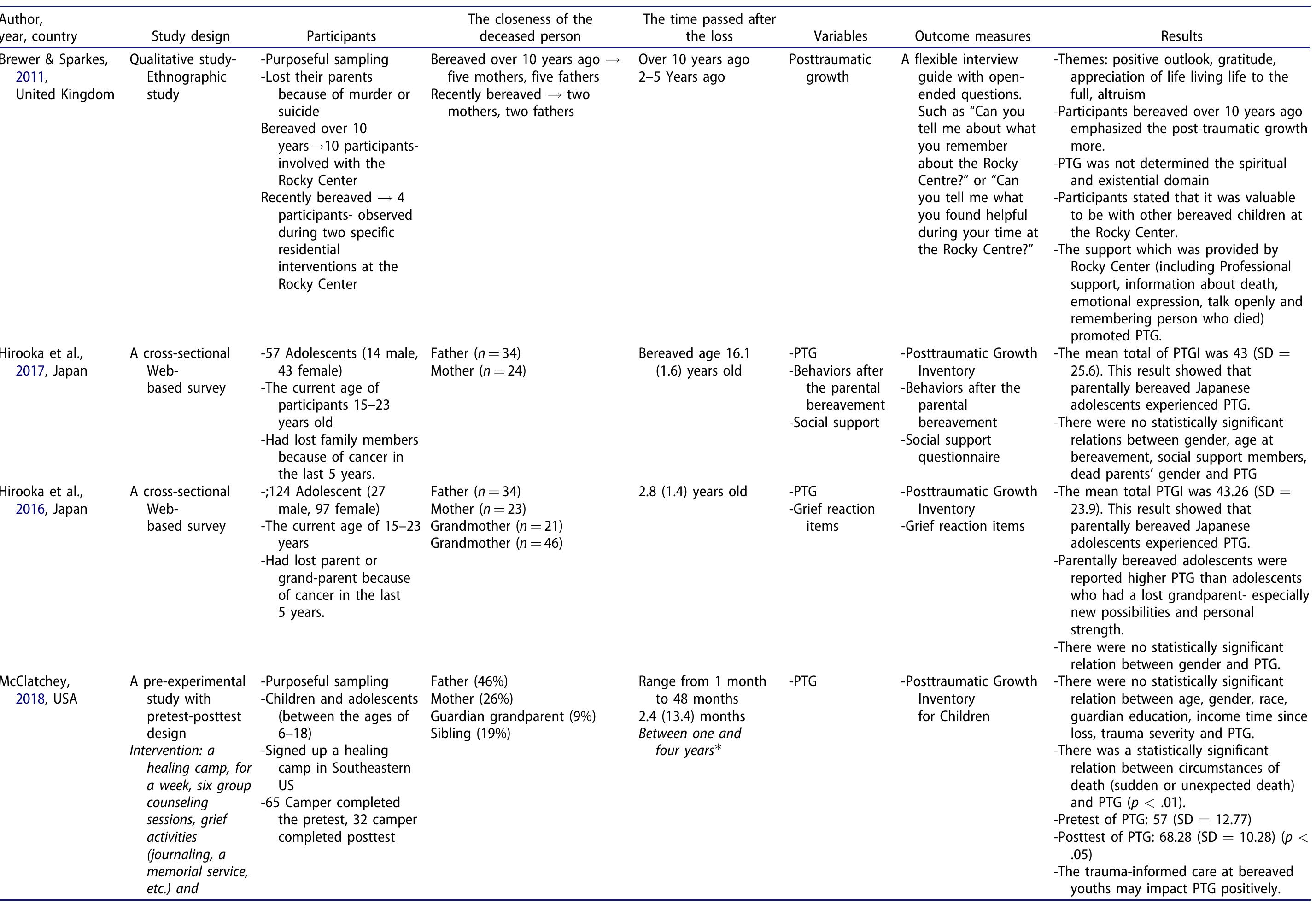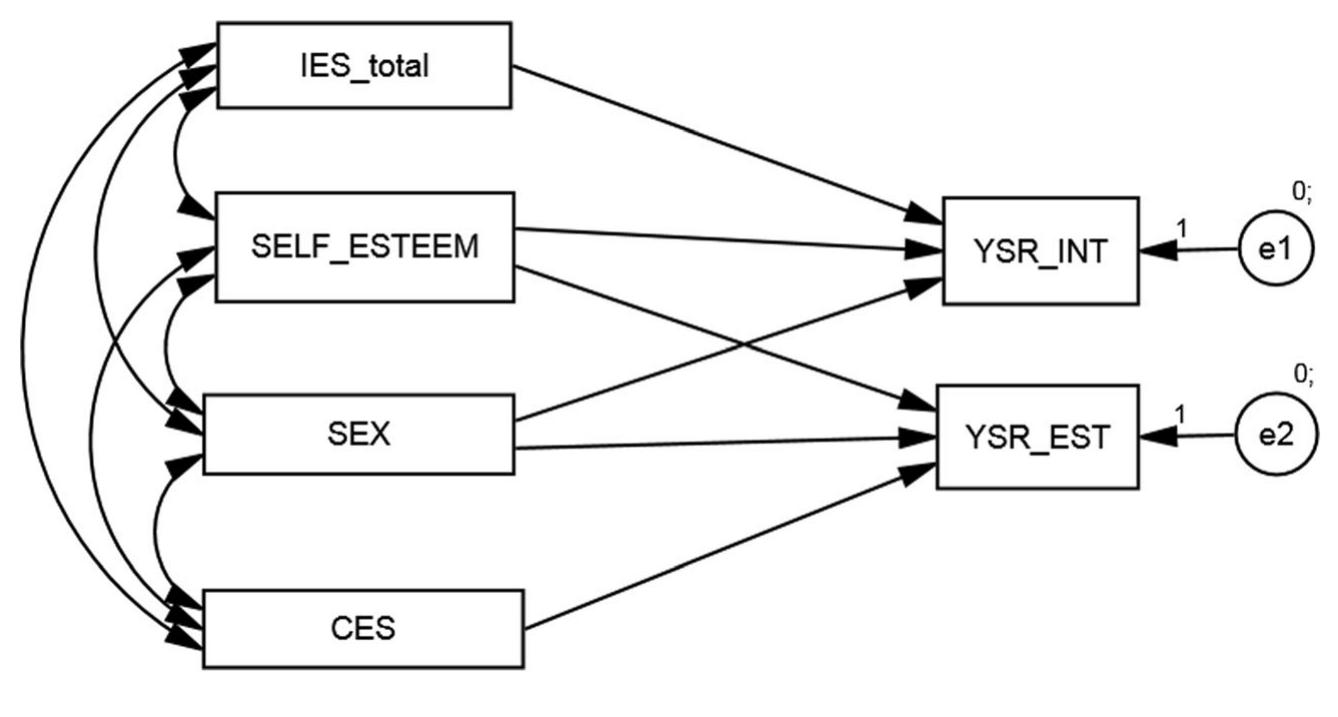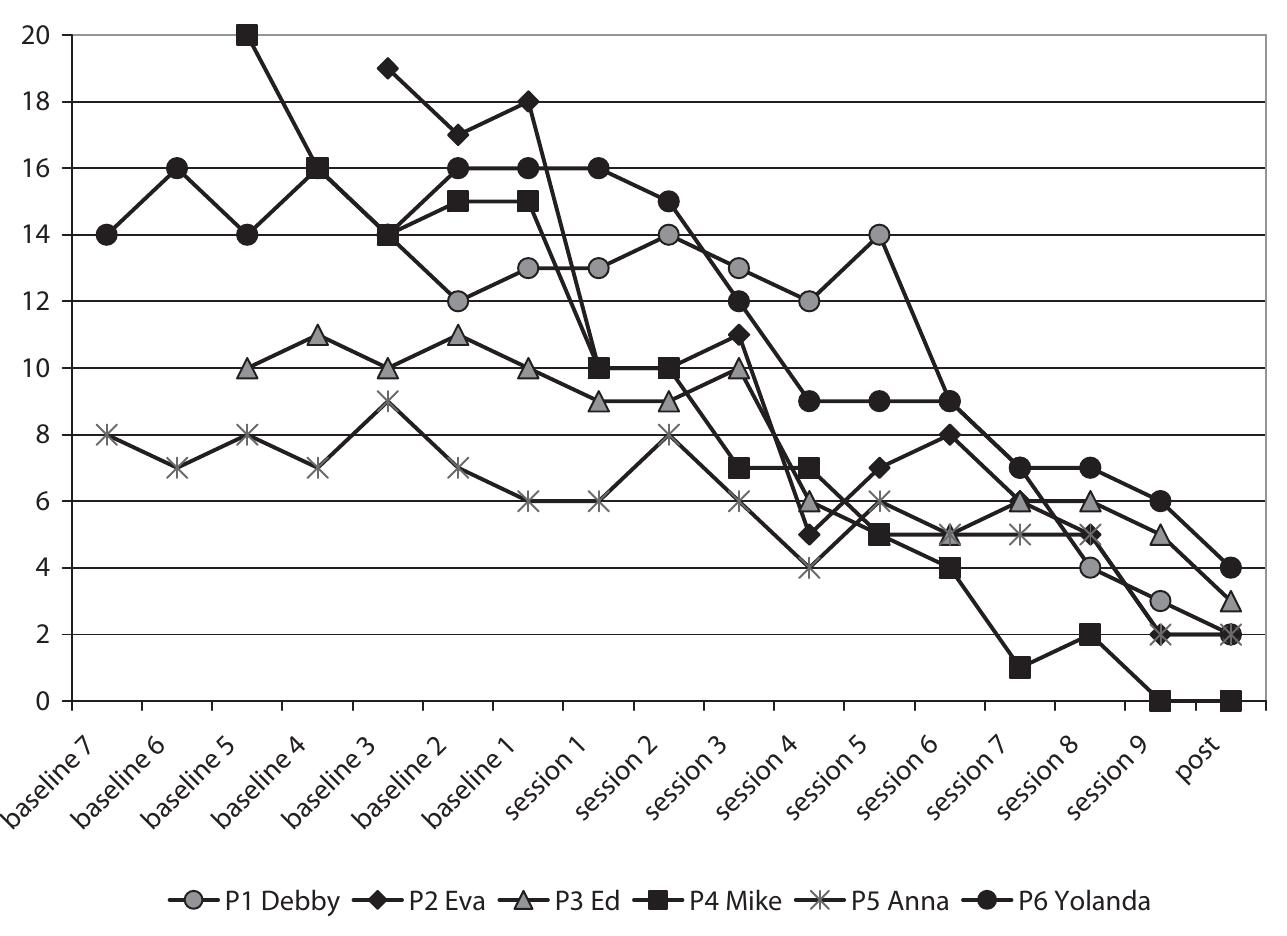"Pediatric physician Dr. Alaa al-Najjar had just begun work in the emergency room at Nasser Medical Complex when she was suddenly called to return to her home in Khan Younis. When she arrived, emergency workers were pulling the charred... more
Cette rencontre intitulée « Apprends-moi la tristesse » : une année de recherche auprès des 6-13 ans en collaboration avec Deuil-Jeunesse sera l’occasion pour notre équipe de vous présenter un projet émouvant qui explore la manière dont... more
The death of a loved one represents one of the most distressing and potentially traumatic life events in childhood and adolescence. Grief reactions in youth are influenced by ongoing developmental processes and manifest differently... more
This mixed method study investigated the short and long term effects of peer loss on eight adolescents after a fatal school bus accident. Phenomenological analysis of their retrospective narratives revealed three patterns (living in... more
Introduction: Children/adolescents mourning the death of a primary caregiver face several challenges, including bond breaking and family restructuring due to loss. The negative connotation associated with suicide loss is enhanced by... more
The Grief Facilitation Inventory (GFI) is a newly-developed measure of caregiver behaviors theorized to facilitate or hinder children's adaptive grief reactions. We examine its factor structure, reliability, and validity. An exploratory... more
Developed by experts in trauma psychiatry and psychology and grounded in adolescent developmental theory, this is a modular, assessment-driven treatment that addresses the needs of adolescents facing trauma, bereavement, and accompanying... more
www.istss.org 24th International Society for Traumatic Stress Studies Annual Meeting 85 have reported hyperresponsivity in the amygdala and dorsal anterior cingulate cortex, and hyporesponsivity in the ventral medial prefrontal cortex in... more
Mounting scientific evidence documents that bereavement by suicide can have a powerful and sometimes devastating impact on survivors. Accordingly, the Survivors of Suicide Loss Task Force of the National Action Alliance for Suicide... more
The systematic review aims to evaluate the posttraumatic growth in parentally bereaved children and adolescents. Six studies were obtained from the literature review. The total number of participants in the studies was 395. The age of the... more
This study proposes a method for calculating the annual incidence rate of sibling bereavement among US youth using national epidemiological data. The proposed model combines data on family household size with national death statistics to... more
Objectives: This poster presents factors related to disorganized attachment style in trauma-affected young children in a therapeutic daycare setting. Methods: This cross-sectional study assessed 102 children (ages 6 months to 6 years) who... more
The aim of this study was to test a model to better explain which factors are linked to the development of internalized and externalized problems in adolescents experiencing death through structural equation model. Internalizing problems... more
The Distinctiveness of Grief, Depression, and Posttraumatic Stress: Lessons From Children After 9/11
The clinical and nosological significance of grief reactions in youth exposed to a shared trauma (9/11) was tested by examining whether the (1) predictors (i.e., non-loss related trauma vs. traumatic bereavement), (2) clinical correlates,... more
Objective: Childhood bereavement is linked to suicide-related behaviors in adolescence and adulthood, but candidate mechanisms through which bereavement may lead to suicide-related behaviors have not been explored. One candidate pathway... more
This study proposes a method for calculating the annual incidence rate of sibling bereavement among US youth using national epidemiological data. The proposed model combines data on family household size with national death statistics to... more
The serious illness or death of a caregiver are two of the most distressing events that can befall a child, and are often temporally linked. Although both adversities may impact children's mental health, studies have not yet attempted to... more
The current study examined how polytraumatization classes predicted mental health outcomes among a sample of treatment-seeking, traumatized, and bereaved youth. A latent class analysis identified that a four-class model with the following... more
Mourning exists at the nexus between individual experience, professional discourses, research, and culture, making it a complex issue for health services that has shown vibrant change in recent years. By contrast, bereavement discourse in... more
Talking and grieving together may be advantageous for maintaining belief in a meaningful future and can help bereaved adolescents and their parents to cope better with the situation. The aim of this study was to explore communication,... more
Background and Scope of the Problem. High prevalence rates of deaths by accidents, suicides, and homicides, coupled with expanding social networks, place adolescents at significant risk for traumatic bereavement occasioned by the... more
Both bereavement and thwarted belongingness serve as risk markers for youth suicide-related behaviors. This study examined candidate predictors of thwarted belongingness among bereaved youth, including caregiver cause of death and... more
Background Following disasters, children and adolescents can use coping strategies to feel better. A growing body of studies investigated the relation between them and maladjustment/adjustment, i.e., negative symptomatology/positive... more
Objective: To describe the test construction procedure and evaluate the internal consistency, criterion-referenced validity, and diagnostic accuracy of the Child/Adolescent Self-Report Version of the UCLA PTSD Reaction Index for DSM-5... more
There is a need to delineate best practices for referring, assessing, and retaining students suspected of posttraumatic stress (PTS) and maladaptive grief (MG) in school-based treatment. Evidence-based risk-screening procedures should... more
The serious illness or death of a caregiver are two of the most distressing events that can befall a child, and are often temporally linked. Although both adversities may impact children's mental health, studies have not yet attempted to... more
Objective: To describe the test construction procedure and evaluate the internal consistency, criterion-referenced validity, and diagnostic accuracy of the Child/Adolescent Self-Report Version of the UCLA PTSD Reaction Index for DSM-5... more
The loss of a parent during childhood is a traumatic experience that can bring about several difficulties in adaptation and psychopathological problems over time during the child's development. The present study assesses the psychological... more
Introduction: Children/adolescents mourning the death of a primary caregiver face several challenges, including bond breaking and family restructuring due to loss. The negative connotation associated with suicide loss is enhanced by... more
Persistent complex bereavement disorder (PCBD) was proposed as a bereavement-related clinical category in the Diagnostic and Statistical Manual of Mental Disorders, 5th edition, which included the disorder among conditions for further... more
Empirical evidence indicates that parental suicide during childhood is a risk factor for mental health difficulties and even suicide, highlighting a need for efficacy-based interventions for suicide-bereaved children. This study presents... more
This study proposes a method for calculating the annual incidence rate of sibling bereavement among US youth using national epidemiological data. The proposed model combines data on family household size with national death statistics to... more
Background and Scope of the Problem. High prevalence rates of deaths by accidents, suicides, and homicides, coupled with expanding social networks, place adolescents at significant risk for traumatic bereavement occasioned by the... more
There has been approximately 1.5 million service members who have spent service time in Iraq, of which about 500,000 have served two tours of combat (Whitlock, 2008 as cited by Huebner, Mancini, Bowen, & Orthner, 2009). Given that... more
Avoidance behavior (engaging in any actions to avoid or escape particular thoughts or feelings) is a universal response to emotionally charged-situations that is most commonly associated with anxiety or fear. However, avoidance behaviors... more
Several studies have suggested that the early loss of parents is a potentially traumatic experience, exposing adolescents to a higher risk for the onset of psychopathological symptoms. Furthermore, research has shown an association... more
The loss of a parent during childhood is a traumatic experience that can bring about several difficulties in adaptation and psychopathological problems over time during the child's development. The present study assesses the psychological... more
Background: Several studies have suggested that the early loss of parents is a potentially traumatic experience, exposing adolescents to a higher risk for the onset of psychopathological symptoms. Furthermore, research has shown an... more
Several studies have suggested that the early loss of parents is a potentially traumatic experience, exposing adolescents to a higher risk for the onset of psychopathological symptoms. Furthermore, research has shown an association... more
Background: Several studies have suggested that the early loss of parents is a potentially traumatic experience, exposing adolescents to a higher risk for the onset of psychopathological symptoms. Furthermore, research has shown an... more
Objective: In some areas of Iran self-immolation is one of the most common ways for committing suicide and it is very disturbing and painful for those who witness it. Due to the presence of the families/relatives of the self-immolation... more
There is a need to delineate best practices for referring, assessing, and retaining students suspected of posttraumatic stress (PTS) and maladaptive grief (MG) in school-based treatment. Evidence-based risk-screening procedures should... more
Following the death of 67 boys in a fire tragedy at Kyanguli School in rural Kenya, the level of traumatic grief was assessed in a sample of 164 parents and guardians whose sons died in the fire. The study was cross-sectional. Counseling... more















































